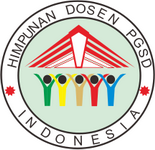LEARNERS’ NEEDS FOR DIGITAL SELF-ASSESSMENT IN PANCASILA STUDENT PROFILE PROJECTS (P5) IN ELEMENTARY SCHOOL
DOI:
https://doi.org/10.31949/jcp.v11i3.13465Abstract
The development of digital technology encourages innovation in learning assessment, including self-assessment which is important for shaping students' learning independence from an early age. However, in elementary schools, the application of digital-based self-assessment is still not optimal, especially in the context of the Pancasila Learner Profile Strengthening Project (P5) which emphasizes the value of reflection and active participation. This study aims to describe learners' needs for digital-based self-assessment, identify challenges faced, and design the concept of its development in the context of P5 in elementary schools. The research used a descriptive qualitative approach and was conducted at SDN Cimuncang with participants as many as 6 teachers and 10 learners involved in the implementation of P5. A purposive sampling technique was used to select the participants. Data were obtained through semi-structured interviews, observation of digital assessment practices in the classroom, and document analysis in the form of reflective journals and school assessment policies. Data analysis refers to the Miles and Huberman model, with the stages of data reduction, data presentation, and conclusion drawing. Triangulation of methods and member-checking were conducted to increase validity. The results showed that the self-assessment implemented did not fully support in-depth reflection, was less interesting, and did not optimally utilize technology. Learners expect more interactive and appreciative assessments. Teachers understand the importance of self-assessment, but its implementation is still limited. The development of digital self-assessment that is adaptive and aligned with P5 principles is needed to improve reflection, motivation, and learning independence.
Keywords:
Digital self-assessment, P5, learning reflection, elementary schoolDownloads
References
Al Ardha, M. A. (2022). Inovasi digital learning pada mata pelajaran pendidikan jasmani, olahraga, dan kesehatan (PJOK). Teknologi Metaverse Dalam Ilmu Keolahragaan, 39-45.
Andrade, H. G., & Du, Y. (2019). Self-assessment and reflection in educational contexts: Moving forward. Journal of Educational Psychology, 111(2), 253–265.
Black, P., & Wiliam, D. (1998). Assessment and classroom learning. Assessment in Education: Principles, Policy & Practice, 5(1), 7-74.
Bloom, B. S. (1956). Taxonomy of educational objectives: The classification of educational goals. Longmans, Green.
Butler, D. L., & Winne, P. H. (2020). Feedback and self-regulated learning: A review of the research. Educational Psychologist, 55(2), 101-118.
Creswell, J. W. (2014). Research design: Qualitative, quantitative, and mixed methods approaches (4th ed.). SAGE Publications.
Deci, E. L., & Ryan, R. M. (2017). Self-determination theory: A macrotheory of human motivation, development, and health. Canadian Psychology/Psychologie canadienne, 58(4).
Gikandi, J. W., Morrow, D., & Davis, N. E. (2021). Online formative assessment in higher education: A review of the literature. Computers & Education, 57(4), 2333–2351.
Hattie, J., & Timperley, H. (2020). The power of feedback. Review of Educational Research, 77(1), 81-112.
Kemendikbud. (2022). Panduan implementasi Kurikulum Merdeka. Kementerian Pendidikan, Kebudayaan, Riset, dan Teknologi.
Kusuma, A. S., & Nurmawanti, I. (2023). Pengaruh Strategi Pembelajaran Problem Based Learning (PBL) Terhadap Keterampilan Metakognitif dan Kemampuan Pemecahan Masalah Mahasiswa. Jurnal Ilmiah Profesi Pendidikan, 8(3), 1922-1934.
López-Pernas, S., Fernández, M., & García-Sánchez, J.-N. (2021). Enhancing student engagement and reflection through interactive digital tools in education. Educational Technology Research and Development, 69(3), 1915-1931.
Mayer, R. E. (2009). Multimedia learning. Cambridge University Press.
Miles, M. B., & Huberman, A. M. (1994). Qualitative data analysis: An expanded sourcebook (2nd ed.). SAGE Publications.
Nicol, D. J., & Macfarlane-Dick, D. (2022). Formative assessment and self-regulated learning: A model and seven principles of good feedback practice. Studies in Higher Education, 47(6), 897-913.
Redecker, C., & Punie, Y. (2017). Digital competence of educators: Identifying key components for today’s teachers. European Journal of Education, 52(2), 154-174.
Sinthia, R., Elita, Y., & Afriwilda, M. T. (2022). Penerapan Blended Learning untuk Meningkatkan Motivasi dan Regulasi Diri Belajar pada Mahasiswa Baru. Indonesian Journal of Guidance and Counseling: Theory and Application, 11(2), 81-90.
Tae, L. F., Ramdani, Z., & Shidiq, G. A. (2019). Analisis tematik faktor-faktor yang mempengaruhi keberhasilan siswa dalam pembelajaran sains. Indonesian Journal of Educational Assessment-Vol, 2(1).
Zubaidah, S. (2016). Keterampilan abad ke-21: Keterampilan yang diajarkan melalui pembelajaran. Proceedings of the National Seminar on Biology Education, 1-17.
Published
How to Cite
Issue
Section
License
Copyright (c) 2025 Liska Auliyani Daswati, Seni Apriliya, Lutfi Nur

This work is licensed under a Creative Commons Attribution-ShareAlike 4.0 International License.
Authors who publish with this journal agree to the following terms:
- Authors retain copyright and grant the journal right of first publication with the work simultaneously licensed under a Creative Commons Attribution License that allows others to share the work with an acknowledgment of the work's authorship and initial publication in this journal.
- Authors are able to enter into separate, additional contractual arrangements for the non-exclusive distribution of the journal's published version of the work (e.g., post it to an institutional repository or publish it in a book), with an acknowledgment of its initial publication in this journal.
- Authors are permitted and encouraged to post their work online (e.g., in institutional repositories or on their website) prior to and during the submission process, as it can lead to productive exchanges, as well as earlier and greater citation of published work (See The Effect of Open Access).


